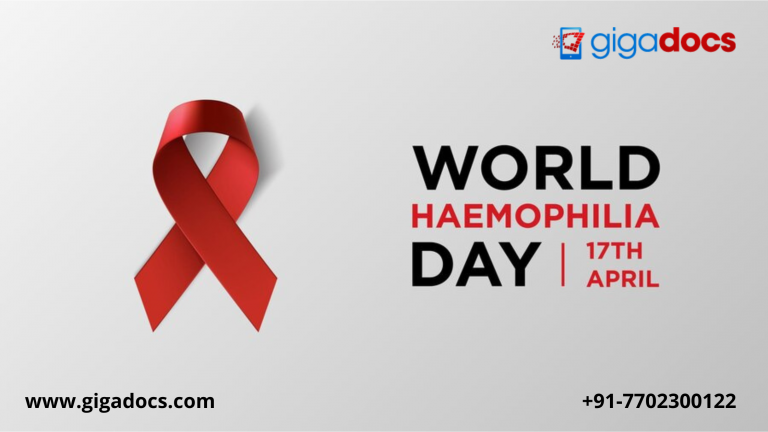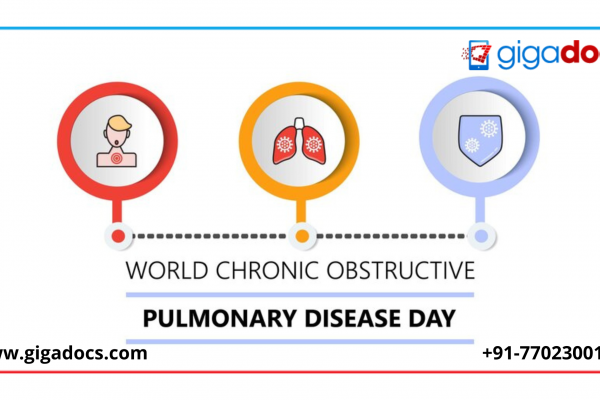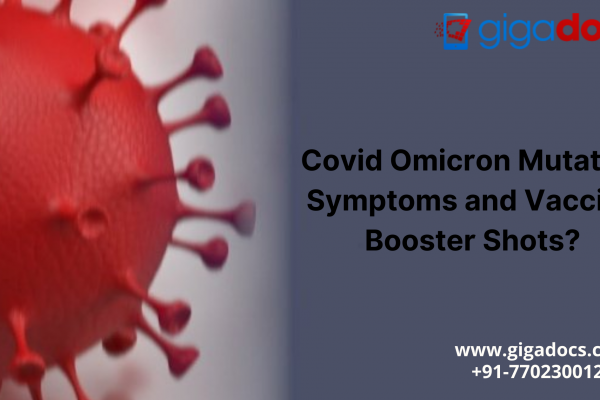Do you suffer from regular shortness of breath, headaches, confusion, weakness, and red lumps which swell with pain? Did you take these symptoms with ease? We advise you not to take them lightly; they may be blood clots leading to severe Hemophilia. To explain Hemophilia in simple terms, they are clumps of blood cells and proteins that form in response to an injury or trauma to a blood vessel.
Blood clots play an essential role in our body’s natural healing process by helping to stop bleeding and promote wound healing. But why are we speaking about Blood Clots? They are closely associated with Hemophilia and the “World Hemophilia Day” observed this month. Before understanding Hemophilia Day, let’s learn more about blood clots, how they are formed, and how they affect our health.
What are Blood clots?
Blood clots are formed when platelets (the small blood cells circulating in the bloodstream) stick together and form a plug at the injury site. This plug is reinforced by a network of proteins called fibrin, which creates a mesh-like structure that traps other blood cells and forms a solid mass. Over time, the blood clot will dissolve and get reabsorbed by the body as the injury heals.
While blood clots are a normal and necessary part of the body’s response to injury, they can also cause health problems if they form inappropriately or in the wrong place. For example, blood clots inside blood vessels can block blood flow to vital organs, such as the heart, lungs, or brain, causing severe health problems or even death. To understand clots more in-depth, let us better understand who is at risk of blood clots-
Risk of Blood Clots
Certain factors can increase the risk of blood clots, including-
- Immobility
- Obesity
- Smoking
- Pregnancy
- Certain medical conditions, like cancer or autoimmune diseases.
What is Hemophilia?
Blood clots can be a necessary part of the body’s response to injury or trauma- they help prevent excessive bleeding and promote healing. However, in certain situations, the formation of blood clots inside uninjured blood vessels can cause serious health problems. For example, blood clots that form in the deep veins of the legs can break loose and travel to the lungs, causing a life-threatening condition called pulmonary embolism. While hemophilia and blood clots may seem like opposite conditions, they are related to the body’s ability to form blood clots properly. Hemophilia is the deficiency or absence of certain clotting factors in the blood, which can lead to prolonged bleeding or the inability to form blood clots properly.
How is Hemophilia Related to Health?
Hemophilia can have a significant impact on a person’s health; it can lead to excessive bleeding and other complications. People with hemophilia are at an increased risk of bleeding injuries, resulting in joint damage, chronic pain, and mobility limitations. They may also experience internal bleeding, which can be life-threatening if left untreated.
In addition to the physical complications, hemophilia can have psychological and social implications. People with hemophilia may experience anxiety, depression, and other mental health issues related to their condition. They may also face social stigma and discrimination and have difficulty accessing appropriate medical care and support.
World Hemophilia Day
World Hemophilia Day is observed on April 17th to honor the birthday of Frank Schnabel, the founder of the World Federation of Hemophilia (WFH), who worked tirelessly to improve the lives of people with hemophilia.
World Hemophilia Day aims to spread awareness about the importance of early diagnosis, access to treatment, and quality care for people with bleeding disorders. This day aims to reduce the stigma and discrimination faced by those living with these conditions and to support research toward finding a cure.
What are the two types of Hemophilia?
Hemophilia is mostly an inherited genetic disorder, categorized mainly into Hemophilia A, Hemophilia B, and Hemophilia C. Let’s understand more about them-
- Hemophilia A: This is the most common type of hemophilia and happens when a person doesn’t have enough clotting factor 8 (factor VIII).
- Hemophilia B: Hemophilia B happens when a person doesn’t have enough clotting factor 9 (factor IX.). Hemophilia B, also called Christmas disease, comes from the surname of the first patient with the condition, Stephen Christmas, who was diagnosed with the disorder in 1952.
- Hemophilia C: Hemophilia C, known as factor 11 (factor XI) deficiency, is a very rare disease, affecting 1 in 100,000 people.
Hemophilia Diagnosis
Usually, Hemophilia is diagnosed in childhood, although in some cases, it may not be identified until later in life. The diagnostic process involves a combination of medical history, physical examination, and laboratory tests. Let’s learn more about them-
- Medical history: The doctor will ask the patient about any family history of bleeding disorders and the patient’s personal history of bleeding, bruising, or unusual symptoms after injury or surgery.
- Physical examination: The doctor will look for signs of bleeding, such as bruises, joint swelling, or blood in the urine or stool.
- Laboratory tests: The doctor may order blood tests to check for clotting factors and measure the time it takes to clot.
A hematologist may perform further tests to assess the condition’s severity and monitor the patient’s treatment if a diagnosis of hemophilia is confirmed. These may include imaging tests like X-rays or magnetic resonance imaging (MRI), joint function tests, and regular blood tests to monitor clotting factor levels. A hematologist may even prescribe a genetic test to confirm the diagnosis and determine the specific type of hemophilia.
It is important to note that a diagnosis of hemophilia is a lifelong condition and requires ongoing management and care to prevent complications and improve the quality of life.
Hemophilia Treatment
A hematologist may prescribe a replacement for the missing clotting factor in the blood. The clotting factor can be given as a preventative measure or as a treatment for a bleeding incident. The specific treatment approach will depend on the type and severity of hemophilia.
- Replacement therapy: This involves infusing clotting factor concentrates into the bloodstream to replace the missing clotting factor. The frequency and dosage of the infusion will depend on the severity of the condition and the individual’s needs. Replacement therapy can be given on-demand, as needed for bleeding episodes, or as prophylaxis to prevent bleeding episodes from occurring.
- Desmopressin: In some cases, desmopressin (DDAVP) can be used to stimulate the release of stored clotting factors in mild hemophilia A. It can be administered as a nasal spray, injection, or intravenous infusion.
- Gene therapy: This is a new approach that involves replacing or repairing the faulty gene responsible for hemophilia. This approach is still in the experimental stage and not widely available.
In addition to these treatments, people with hemophilia may require supportive care to manage the complications of the condition. This may include physiotherapy to maintain joint function, pain management, and education on how to prevent bleeding episodes and manage bleeding when it occurs.
It is important for people with hemophilia to receive ongoing medical care and to work with a multidisciplinary team of healthcare professionals to manage the condition effectively. With proper treatment and management, people with hemophilia can lead healthy and productive lives.
Teleconsulting a Hematologist on the Gigadocs App
Teleconsulting, a hematologist for Hemophilia, can be very helpful in getting expert medical advice without having to visit a physical clinic. For expert consultations with the best hematologist, download the Gigadocs app with the link provided at the end of this blog. During a teleconsultation with a hematologist, you can discuss your symptoms, medical history, and any concerns related to Hemophilia. The hematologist may also ask questions about your family history and perform a physical examination remotely.
A hematologist can help you manage your condition and develop a personalized treatment plan based on the information you provide. This may include medications to prevent and treat bleeding episodes, lifestyle changes, and recommendations for physical therapy or other supportive care.
You must always note that while teleconsultations are a convenient medical consultation option, they may not be suitable for all cases. A physical exam or additional tests may be necessary for an accurate diagnosis and treatment plan. Book expert hematologists and diagnosis tests on the Gigadocs app-
Download the Gigadocs app from-
- IOS App – apple.co/2W2iG4V
- Android App – bit.ly/33AQoRC
To know more e-mail, at info@gigadocs.com




